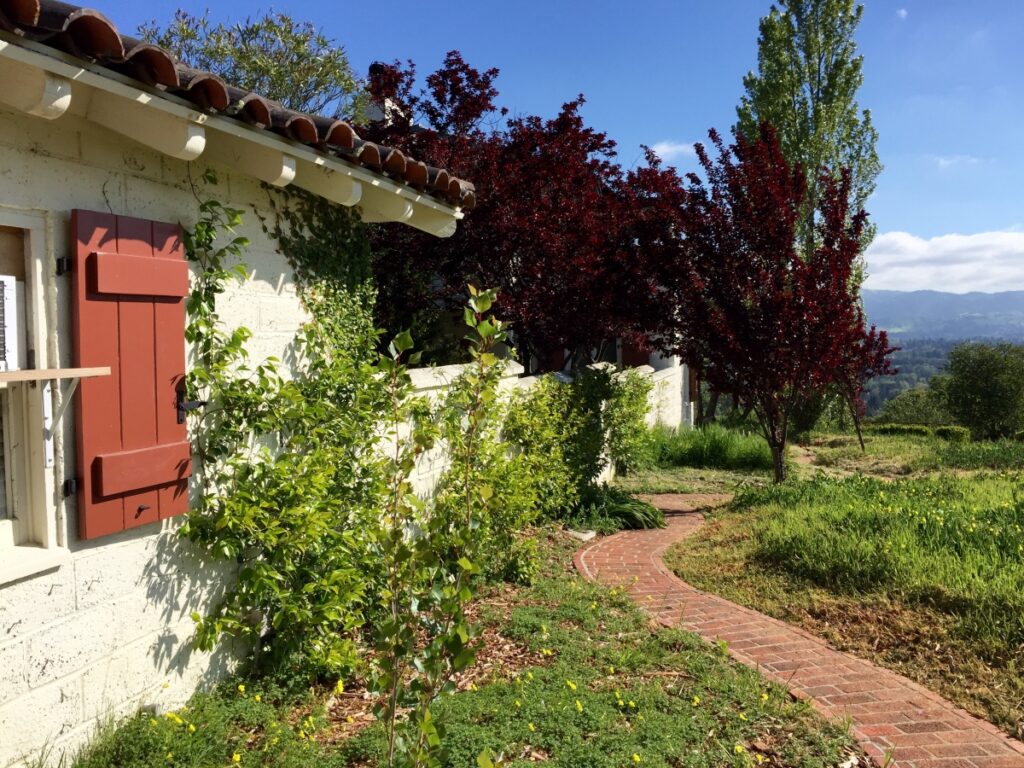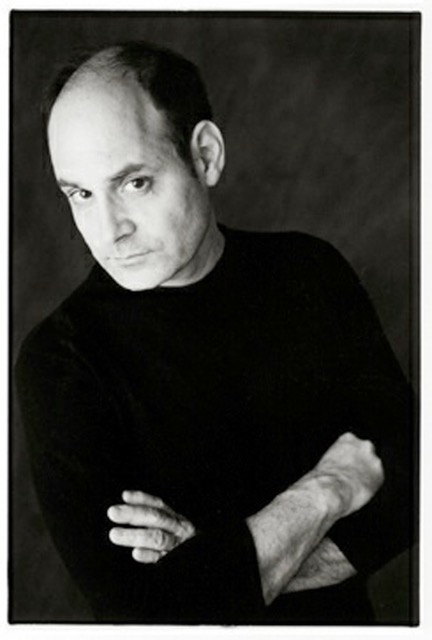
Artists in Residence Value Their Time at Tao House
December 14, 2019
 John Jesurun found the creative focus he needed during his four weeks at Tao House as a Travis Bogard Artist in Residence. The playwright, director, and media artist was looking for time and solitude away from New York City to research and write his ambitious new play, “Tabula Rasa.”
John Jesurun found the creative focus he needed during his four weeks at Tao House as a Travis Bogard Artist in Residence. The playwright, director, and media artist was looking for time and solitude away from New York City to research and write his ambitious new play, “Tabula Rasa.”
“Being there day after day without interruption gave me great focus … to bring the work from an idea to actual writing,” said Jesurun, whose specialty is integrating drama, art, and media into stage works. “The emphasis of the project became very much clearer.”
Jesurun’s new play is part science fiction and part meditation on how human beings, especially in the digital age, retain and use information to create memory and interpret reality. In the not-too-distant future, an academic travels to a space station to “decontaminate” archival material that a “morally ambiguous” government finds contrary to the past and present it wants to shape. With his work, Jesurun hopes to explore “the archival qualities of the mind and the fragile nature of information.”
Jesurun, who previously had fellowships with the National Endowment for the Arts, the MacArthur Foundation, and the
Rockefeller Foundation, said the Tao House Artist in Residence program is “unique” in that it is a solitary fellowship. “I could get some serious work done.” He’ll continue work on “Tabula Rasa” at the American Academy of Rome, where he will focus on architectural features that may appear in the play. Martha Ross
 “Absolutely!” is how scholar Jane Dominik responded to the question, “Was the time at Tao House beneficial?”
“Absolutely!” is how scholar Jane Dominik responded to the question, “Was the time at Tao House beneficial?”
Dominik was chosen by the Eugene O’Neill Foundation as a 2019 fellow in the Travis Bogard Artist in Residence Program. “From the moment I arrived, the peaceful and private ambience of Tao House allowed a kind of focus not available elsewhere.” Dominik teaches English at San Joaquin Delta College, in Stockton, California. She planned to complete for publication a paper presented at the American Drama Conference. Titled Singing for Their Fathers: The Struggle for Connection and Catharsis in American Drama, the paper analyzed nine plays by five playwrights, including O’Neill’s semi-autobiographical Long Day’s Journey Into Night.
“Although thematic threads permeate many of his plays dealing with the relationships between fathers and sons,” Dominik notes, “O’Neill draws a lot from his observations and life experiences.” Some universal threads include pressures exerted on fathers and sons, the resulting internal and external conflicts, and the haunting lack of a healthy or happy resolution.”
“Before arriving at Tao House,” she remembers, “I decided to do more research and reading about O’Neill.” After her work here, Dominik decided to expand her project to analyze forty-two plays by ten playwrights, with possibly more in the future. Her use of the wealth of information in the archives gave her more insight into O’Neill as she expanded the paper. “Tours of the house, the barn, and other areas complemented my understanding of O’Neill’s time and writing at Tao House.” This included the library of renowned O’Neill scholar Travis Bogard, as well as DVDs, letters, and journals of O’Neill’s wife Carlotta. Dominik was gratified to absorb the environment in which O’Neill created. John Barry
It was raining hard as he raced down to the theatre in the Village. He had been rehearsing “All God’s Chillun” all day but tonight he would star as Brutus Jones. . . . Artist in Residence Katie Johnson’s creation of a day in the life of Paul Robeson begins her book Racing the Great White Way. Professor Johnson, from Miami University, Cincinnati, Ohio, said her book “will show that during a time when U.S. culture was profoundly segregated, the theatre was a site of interracial traffic.” She explained that little attention has been paid to collaborations between downtown and uptown, between the emerging modernist (and largely white) theatre artists and Harlem theatres. O’Neill, whose dramas repeatedly broke color lines, was a central figure linking these co-extensive projects.
The Emperor Jones made major breakthroughs in race relations; this play had firsts on Broadway, in opera and movies, and abroad.
EONF Artistic Director Eric Fraisher Hayes commented on hearing Johnson speak about her project, “What I particularly appreciated about Katie’s work was the infusion of storytelling. It made the material very accessible.” Advisory Board Member Martha Ross responded, “I wasn’t aware of this history of Broadway … the significant influence of African-American artists in American theatre in the 1920s and 1930s. It was a lively, engaging, and illuminating discussion.” Johnson, also vice-president of the Eugene O’Neill Society, concluded, “I am glad Eugene O’Neill has offered a pathway into this work —my time here at Tao House has been nothing short of remarkable. I have worked at several distinguished archives and this experience has far surpassed other experiences.” Wendy Cooper
